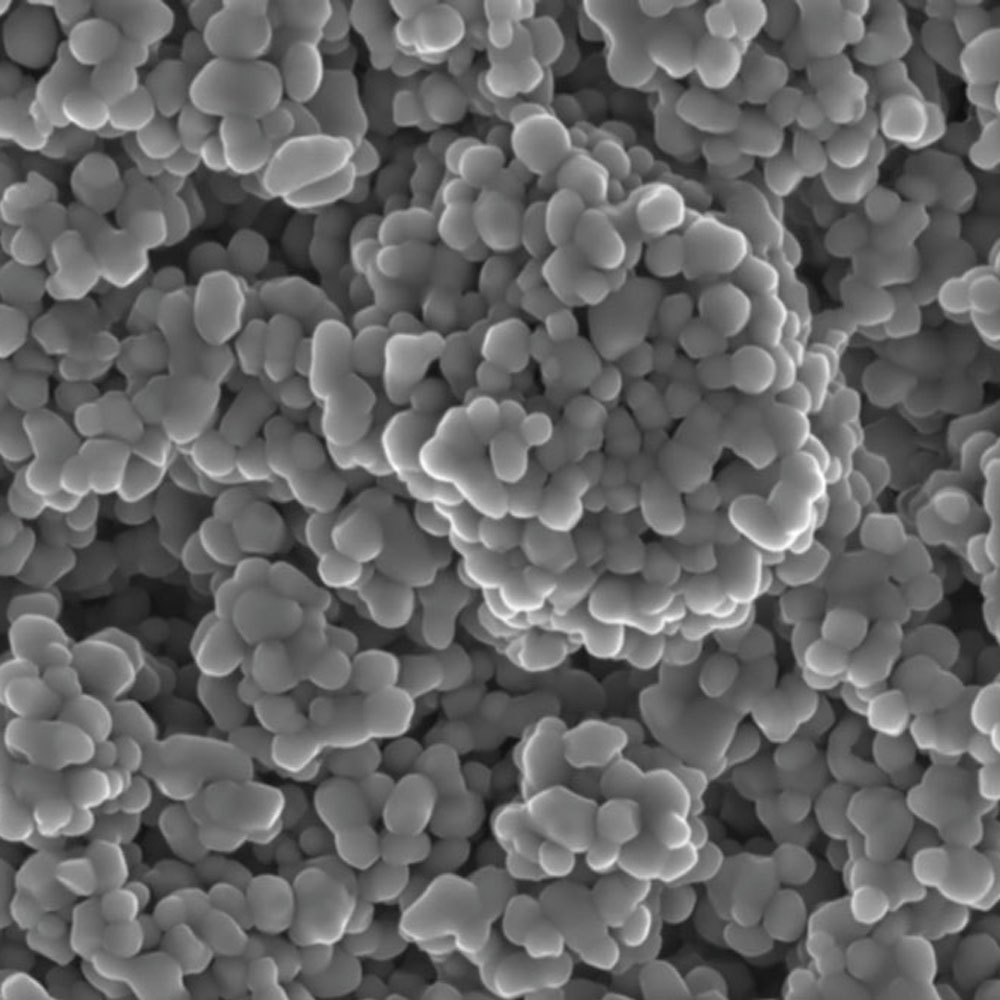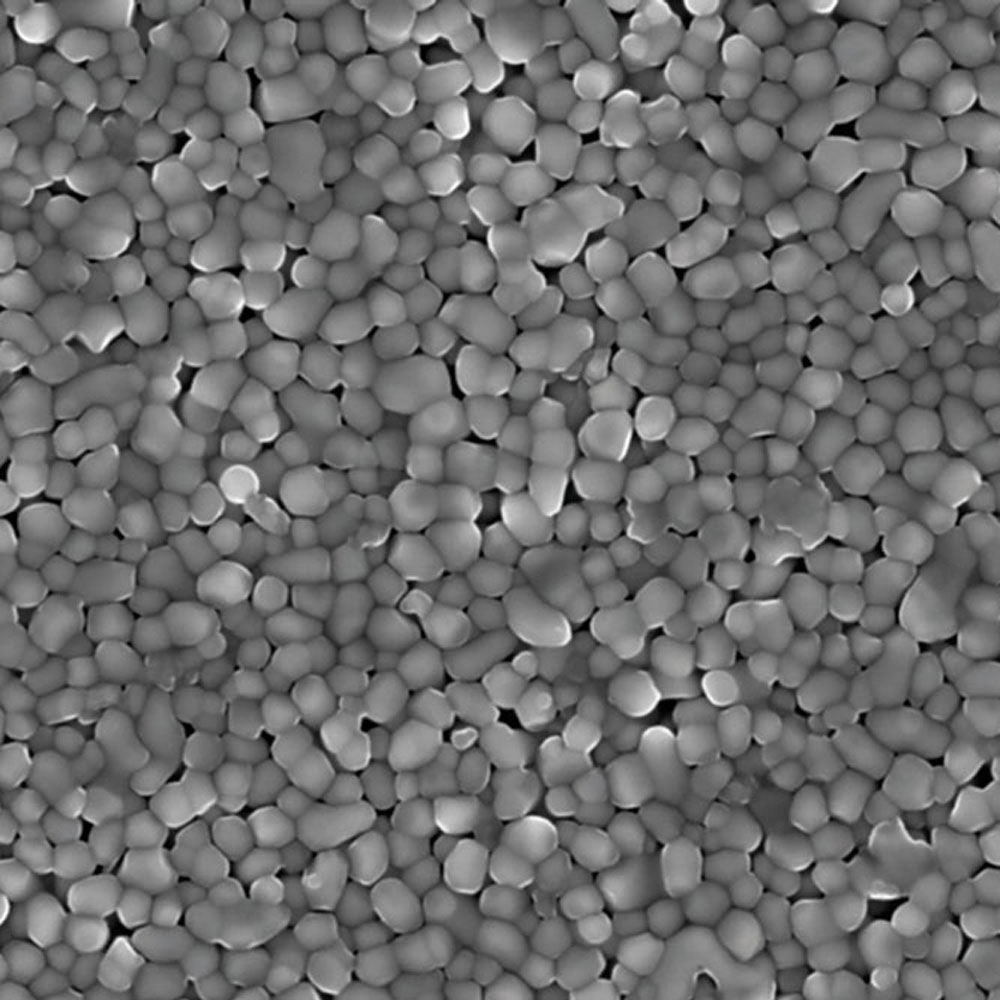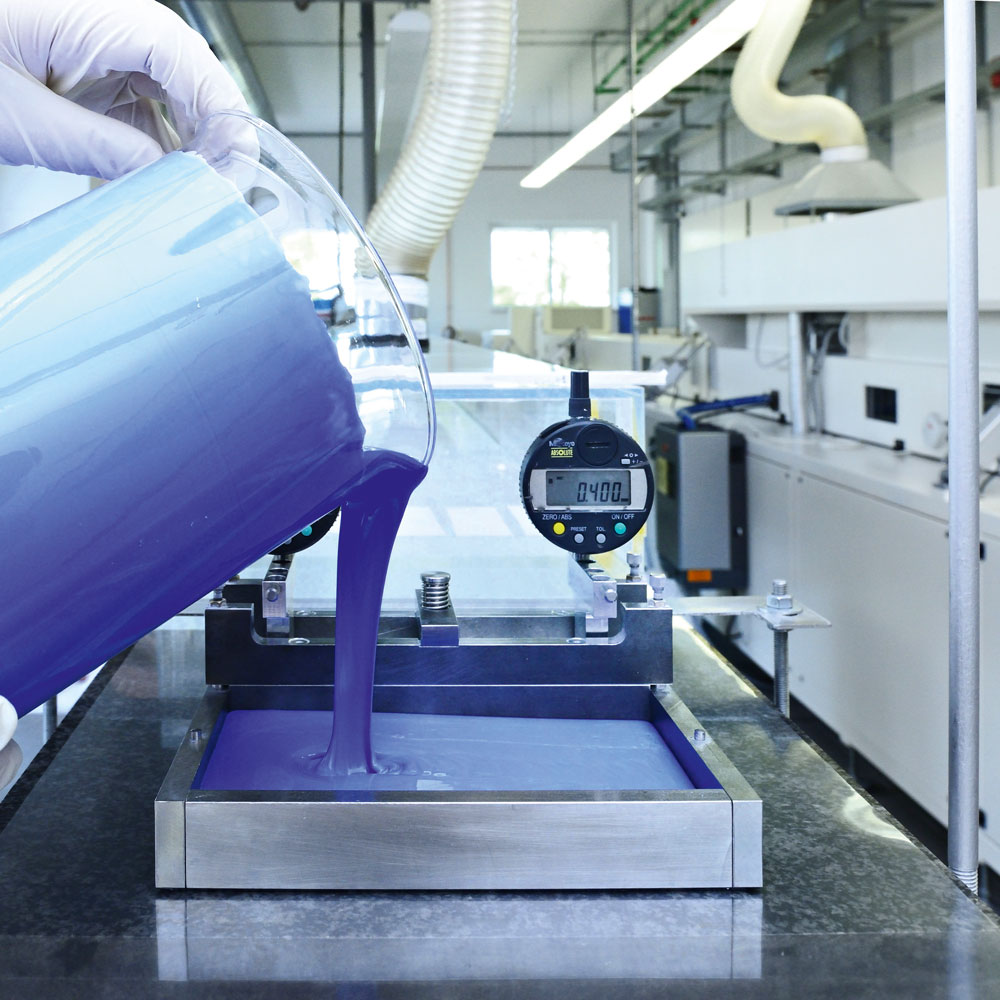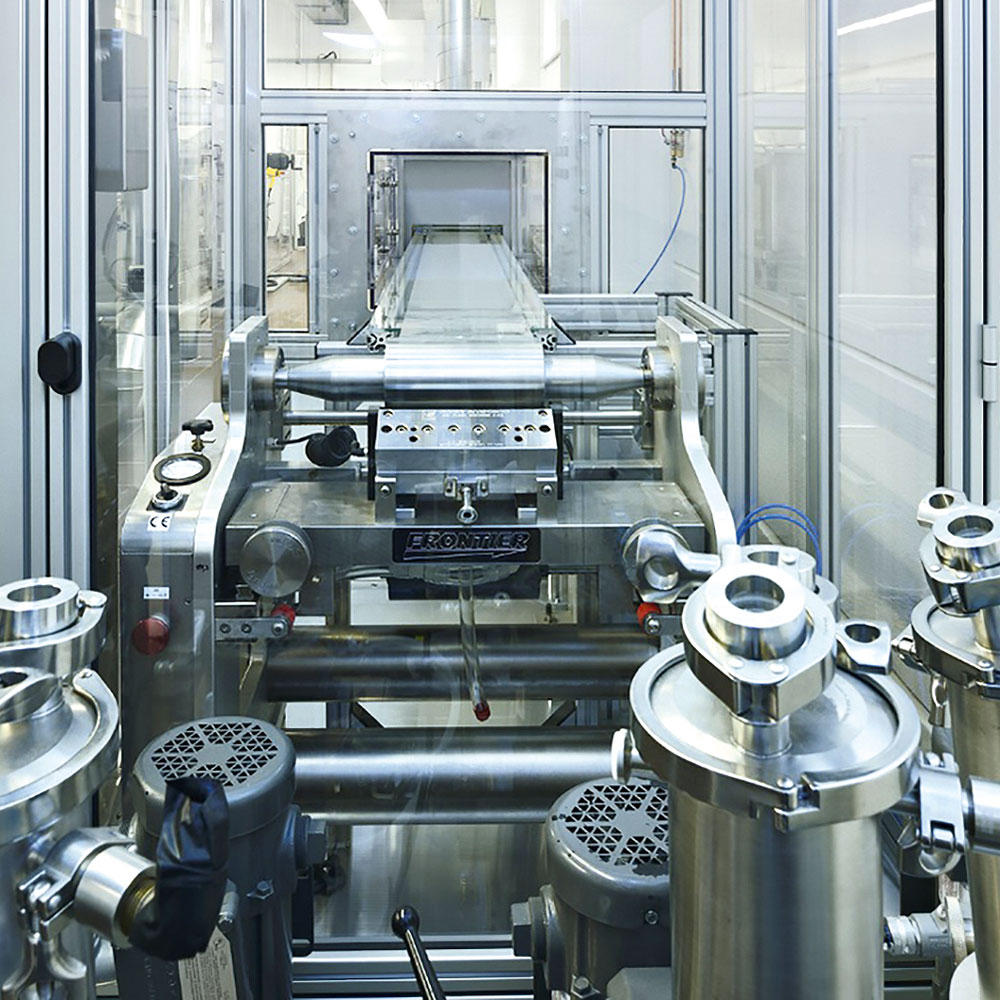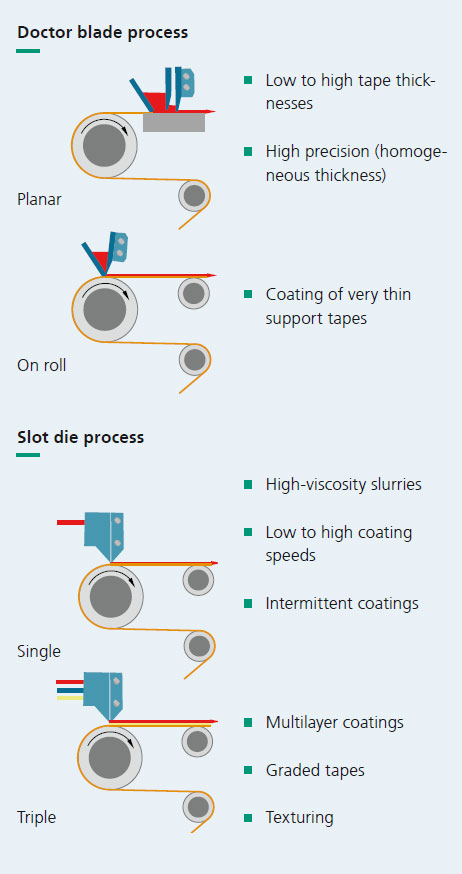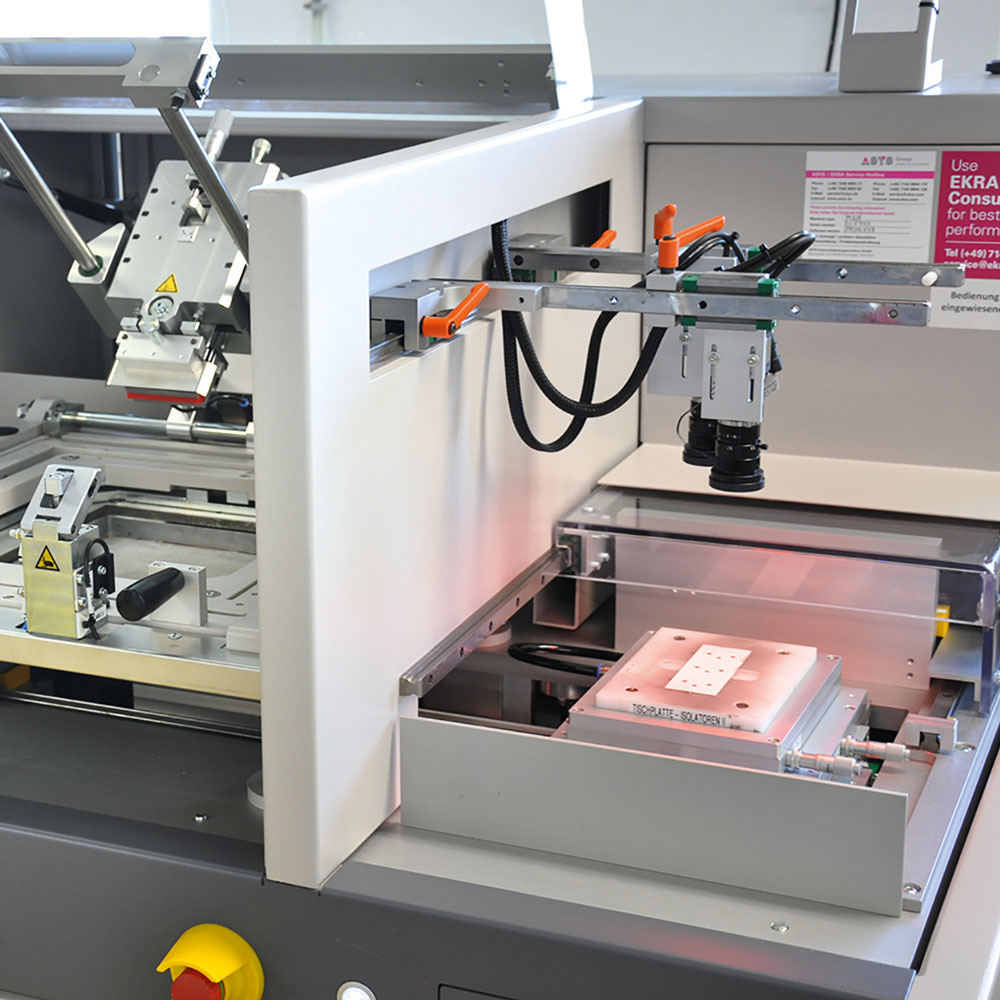
Material and technology development for ceramic tapes

Overview
The tape casting process starts with the powder preparation. The powders are dispersed in a solvent and homogenized using binder and plasticizer. Casting starts once the slurry has been filtered and deaired. The slurry is cast onto a moving carrier tape using a doctor blade or slot die. Once dried, the tape, now called green tape, is cut to size, debindered and sintered.
Powder preparation
When developing castable slurries, the first step is the preparation of customized powders. The morphology and particle size distribution of the powders influence the quality of the casting slurry. Two main routes are available: Commercially available or customer-specific powders are milled to the required particle size through mechanical treatment processes, or the morphology and grain size are configured through suitable synthesis processes during powder preparation.
Supporting analytics
Particle size distribution, laser diffraction, sedimentation analysis, surface characterization, BET, morphology, light microscopy, electron microscopy, green density and sintered density
Dispersion
During dispersion, the prepared powder is finely dispersed in a solvent by adding a dispersing agent. The choice of dispersing agent depends on the surface chemistry of the powder to be processed, as well as the selected solvents. Very fine or nano-scale powders have a large specific surface, which means the ratio between surface and volume is high, resulting in high surface energy. Such ratios are not ideal from an energetic point of view, because the powder particles tend to agglomerate. Tape casting technology often uses non-foaming tensides and sterically acting (short-chain) polymers to separate and fully wet the powder particles. Based on their molecule properties, such polymers can be used as dispersing agents. Furthermore, it is important to prevent sedimentation in the slurry, in order to avoid density gradients in the tape.
Supporting analytics
Viscosity measurements, zeta potential measurement, scanning electron microscopy
Homogenization
Binders and plasticizers are added to the dispersed solution for homogenization. Following that, the slurry is slowly mixed. The choice of binder and plasticizer depends on many different factors, such as powder morphology, solvent system, processing and thermal treatment of the green tape. Following homogenization, the slurry is filtered and deaired in several steps. First, a large sieve is used to remove the grinding media from the slurry. In a second step, the undissolved parts or residual agglomerations are separated from the slurry. The final step, the deairing of the slurry has a signifiant effect on the quality of the tape. Air bubbles burst and come to the tape surface as the material dries, which produces small holes or bumps in the green tape. Perfect tapes can only be produced if the slurry is free from air bubbles.
Supporting analytics
Viscosity measurements, slurry efflux time, grindometer
Tape casting
The tape casting center at Fraunhofer IKTS in Hermsdorf has available several casting machines, which use the conventional doctor blade method and differ from each other in terms of machine length, casting speed and drying method (convection, contact, UV, flotation).
Furthermore, two machines are available which add slot-die coating to the IKTS technology portfolio. With this process, the slurry is pumped into a slot die and applied to the moving carrier tape without contact. The so-called VALIBAT coater is used to realize tapes in the area of battery research. IKTS pursues a modular and ecological approach to tape casting. Following the application of the layer using the slot die, the cast electrode film is dried contactless through suspension drying and then redensified in an integrated calendar if required. The solvents contained in the tape casting slurry are then removed using thermal post-combustion and the resulting energy is reintroduced into the machine to dry the layers. The triple-slot-die coater allows multiple layers to be cast in one single casting step. Tapes with different functionalities or differently graded functionalities can be cast directly ‘wet-in-wet’ using triple-slot die coating. Both slot-die machines can be easily refitted to the conventional doctor blade process, whereby the slurry is applied directly to a steel carrier tape using the triple-slot-die coater.
IKTS offers a combined process of optical and eddy current methods to monitor the tape casting process. It reliably measures in-line wet layer thickness, dry layer thickness, differences in density and optical defects.
Supporting analytics
Green tape characterization, tape thickness, green density, Hg porosimetry, field emission scanning electron microscopy
Functionalization
Innovative printing, construction and connecting methods are essential when cast tapes are used for multilayer-based components and systems. They have a huge influence on the performance and strength of a component.
In many cases, ceramic tapes are functionalized with conventional screen printing and stencil printing methods. Other methods use digital printing technologies, such as inkjet or aerosol-jet printing. Fraunhofer IKTS has many years of experience in the development of client-specific functional pastes and inks for thick-film technology. This enables us to print the most varied materials on tape, such as precious metals, glass or functional ceramics. IKTS offers various technologies for joining and packaging, such as soldering, gluing or wire bonding based on polymeric and glass-bonded thick-film pastes.
Application examples
- Sensor housings
- Housings for reference electrodes with diaphragm
- Ceramic capillary bundles
- Internal metallizing of electroceramic honeycomb bodies
- Printed heater structures
- Ceramic components for ozonizers
- Ceramic basic components for thermally stable pressure sensors
Supporting analytics
Thickness measurement, adhesivity, thermal characterization, field emission scanning electron microscopy, functional characterization
Tape systems
| Solvent | Binder | Solid material/slurry | Green tape |
|---|---|---|---|
|
|
|
|
Al2O3, ZrO2, TiO2 |
|
Magnetic powder tapes |
Absorber ferrite tapes
|
MgO, MgAl2O4 |
|
LTCC |
Tapes anodically bondable to silicon
|
HTCC |
Al2O3, ZrO2, Si3N4, AlN |
Functional tapes |
Metal Piezoceramics Glass solders Perovskite |

